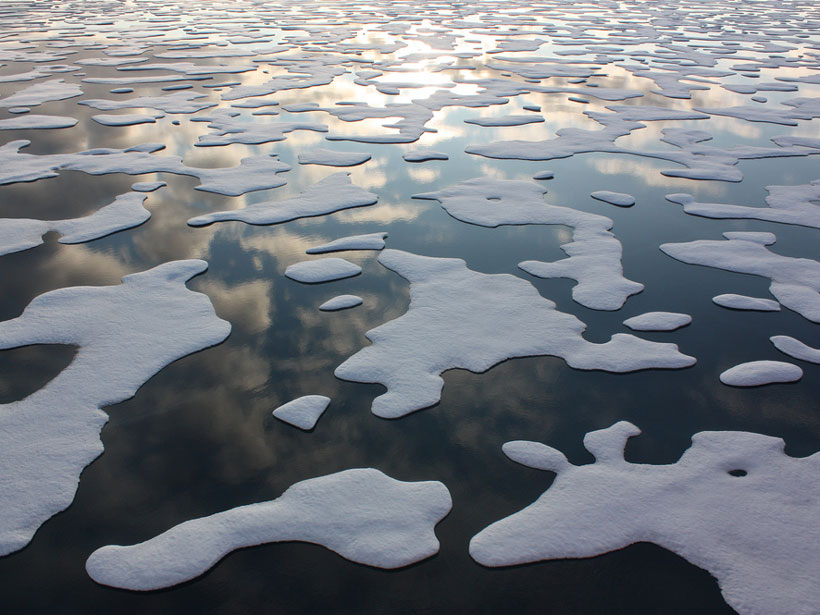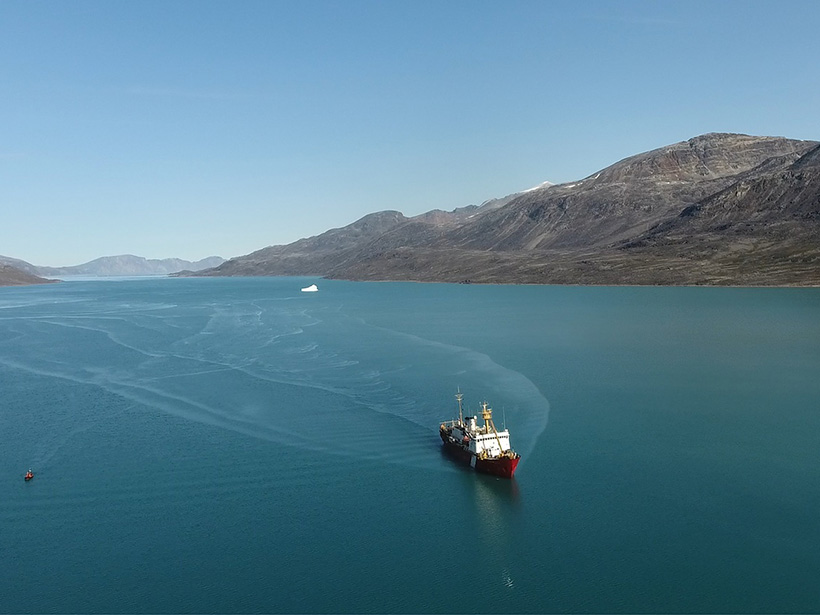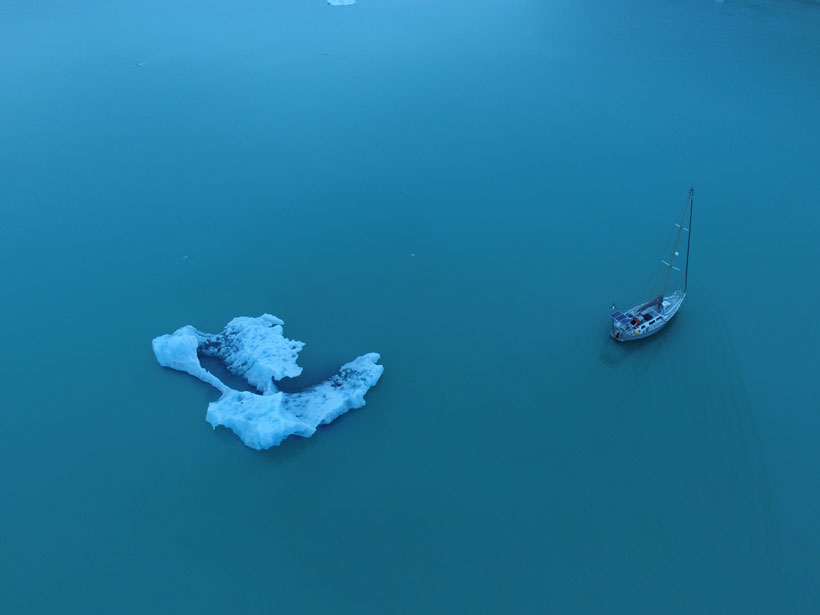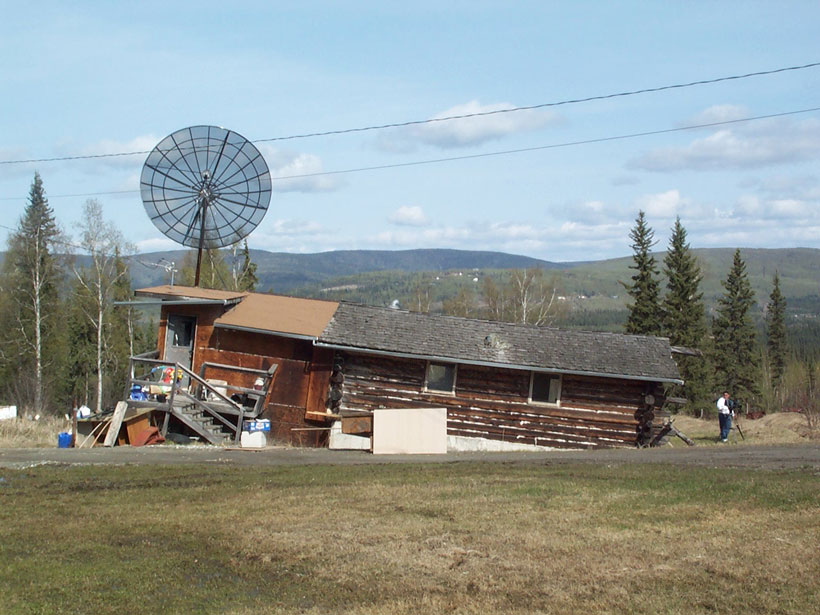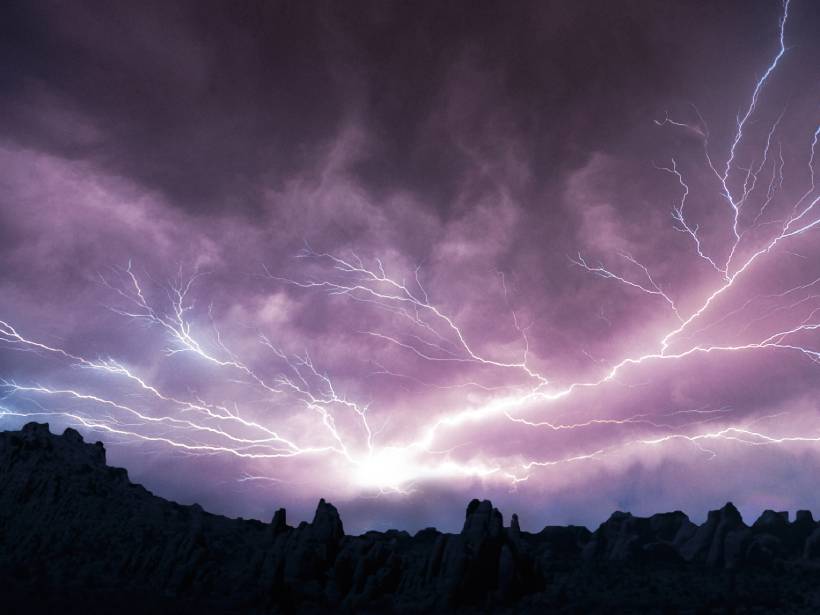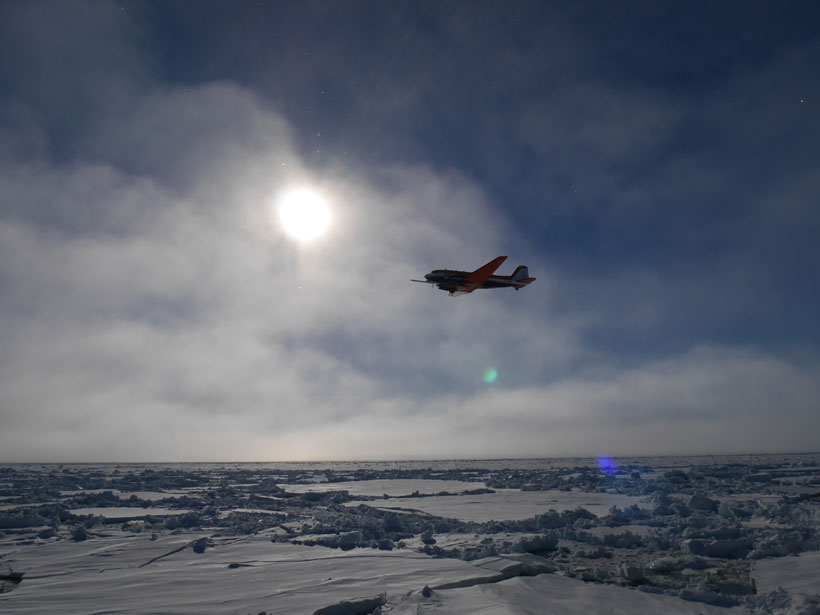Last winter, an unprecedented high-pressure system over the Arctic drove nearly a quarter of old sea ice into warmer waters, putting it at greater risk of melting.
Arctic
Ice Lenses May Cause Many Arctic Landslides
When permafrost thaw reaches concentrations of ice underneath the surface, it may trigger local soil instability.
An Iceberg May Have Initiated a Submarine Landslide
A new study shows that icebergs may initiate submarine landslides when they collide with the seafloor.
Studying Arctic Fjords with Crowdsourced Science and Sailboats
A new study demonstrates the benefits of crowdsourcing science using sailboats to better understand the impact of melting sea ice in the Arctic.
Laser Flashes Shed Light on a Changing Arctic
An ongoing project in northern Alaska is using pulses of laser light to monitor anthropogenic activity, ice quakes, and marine wildlife.
A Massive Methane Reservoir Is Lurking Beneath the Sea
Scientists have found a methane reservoir below the permafrost seabed of the Laptev Sea—a reservoir that could suddenly release large amounts of the potent greenhouse gas.
Mapping the People, Places, and Problems of Permafrost Thaw
By combining demography data with permafrost maps, researchers provide a first count of the population on permafrost and predict its imminent decline.
A Space Hurricane Spotted Above the Polar Cap
Researchers have identified a high-latitude phenomenon that looks remarkably like a tropospheric hurricane, with spinning arms of plasma and a shower of electrons.
Arctic Lightning Up 300% in One 11-Year Study
The increase may be due to climate change, researchers suggest, but the trend hasn’t been observed in other lightning data sets.
Glimpsing the Ins and Outs of the Arctic Atmospheric Cauldron
Specially equipped aircraft will follow air masses into and out of the Arctic, observing their transformations and improving our knowledge of the Arctic climate and its global influence.

